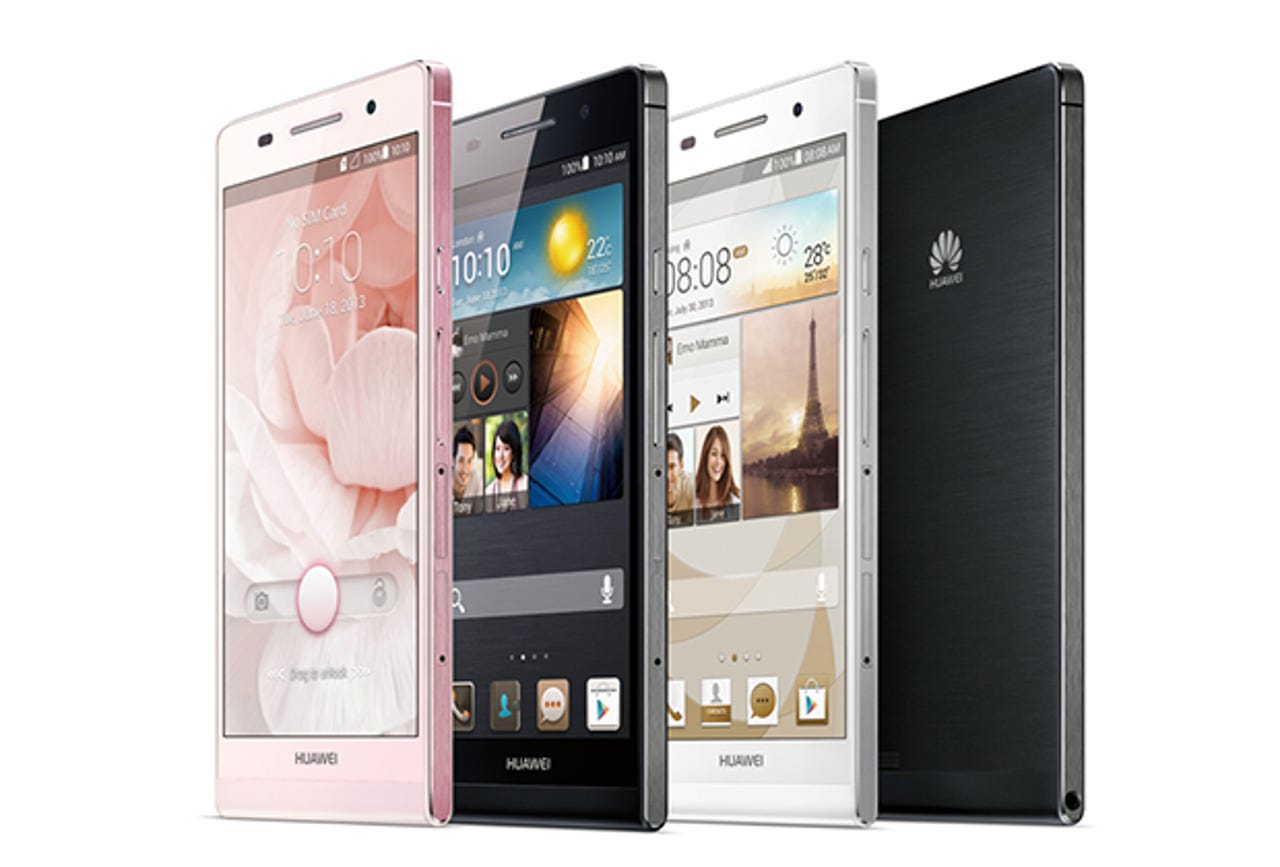Huawei Ascend P6 First Take: Thin and good value

The world's thinnest smartphone is, for the moment, Huawei's Ascend P6, whose 6.18mm thickness is a key attraction. But there's more to this handset than its sliver-like profile: it's actually rather good value for money. With a price tag of around £310 (inc. VAT) at the time of writing, the Ascend P6 is at the top end of the mid-range smartphone market.

Thinness aside, the rest of the Ascend P6's design is rather nice too. The edges are silver metal on three sides and plastic on the (rounded) bottom, while the backplate is brushed metal. On my black review sample, the overall look is rather classy. The P6 is also available in white and pink.
The backplate is fixed, so your SIM and microSD card slots sit in trays on the right edge of the chassis. You need a tool to remove these — an unfurled paperclip is the usual choice. Huawei does provide a little tool, which has a home on the phone itself — in the headset slot.
This is great for first use, but as soon as you want to use headphones when you'll hit the problem of where to store the tray-opening tool. My guess is that most people will lose it within a week.
The headset jack is on the bottom-left edge, which is not ideal. The Ascend P6 is quite narrow handset, and its thinness makes it a pleasure to carry around in a pocket. But a protruding headset connector is likely to prove awkward.
The LCD screen measures 4.7 inches across the diagonal and its 1,280-by-720-pixel resolution makes it comfortable to view video, read e-books and browse the web.
Although the Ascend P6 lacks both LTE and NFC, the headline specifications are pretty strong for a phone at this price: a 1.5GHz quad-core Huawei processor supported by 2GB of RAM and 8GB of internal storage. User-accessible storage is only half the 8GB headline figure, however.
Android 4.2 plus Emotion UI
Android 4.2 is bolstered by Huawei's own user interface overlay, which it calls Emotion UI. One aspect of this that divides opinion is the lack of an app drawer: applications icons are simply added to the next available home-screen space.
There are nine home screens in all, and you can put applications into folders, so you're unlikely to run out of space. Still, it's a quirky idea, which I hated at first — there's nothing fundamentally wrong with the Android app drawer, so why remove it?
The Emotion UI does have some excellent features though. An exemplary one is the profile switcher, in the form of an on-screen wheel that you rotate to select a profile. It's fast, easy to use and looks neat. I also like the way Huawei has brought app permissions together in one place so you can easily tweak settings. This echoes Apple's system, of course, and it 'just works'.
I'm also quite a fan of Huawei's myriad themes. Many are on the handset, many more online, and it's likely the choice will grow over time. You could give your phone a new look every week if you wanted to.
Less endearing is the Me widget that Huawei has put on the main home screen. This giant 'combo' widget can show a few contacts, gallery photos, the current weather and provide music controls. It's a mess, but thankfully is easily removed.
The Ascend P6 is a very likeable smartphone. Huawei clearly knows how to do handset design and, with the exception of the unfortunate Me widget, it's also pretty handy with user interface tweaks.